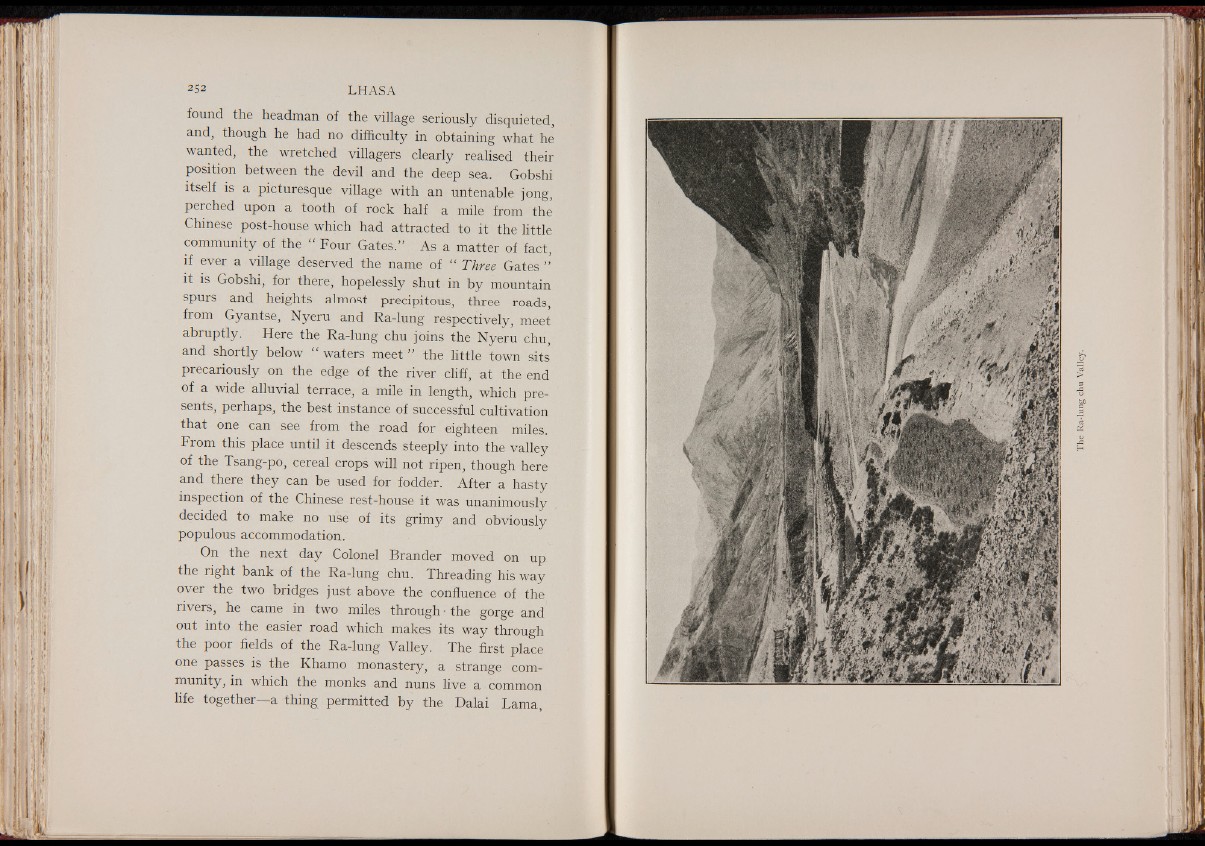
found the headman of the village seriously disquieted,
and, though he had no difficulty in obtaining what he
wanted, the wretched villagers clearly realised their
position between the devil and the deep sea. Gobshi
itself is a picturesque village with an untenable jong,
perched upon a tooth of rock half a mile from the
Chinese post-house which had attracted to it the little
community of the “ Four Gates.” As a matter of fact,
if ever a village deserved the name of “ Three Gates ”
it is Gobshi, for there, hopelessly shut in by mountain
spurs and heights almost precipitous, three roads,
from Gyantse, Nyeru and Ra-lung respectively, meet
abruptly. Here the Ra-lung chu joins the Nyeru chu,
and shortly below waters meet ” the little town sits
precariously on the edge of the river cliff, at the end
of a wide alluvial terrace, a mile in length, which presents,
perhaps, the best instance of successful cultivation
that one can see from the road for eighteen miles.
From this place until it descends steeply into the valley
of the Tsang-po, cereal crops will not ripen, though here
and there they can be used for fodder. After a hasty
inspection of the Chinese rest-house it was unanimously
decided to make no use of its grimy and obviously
populous accommodation.
On the next day Colonel Brander moved on up
the right bank of the Ra-lung chu. Threading his way
over the two bridges just above the confluence of the,
rivers, he came in two miles through • the gorge and
out into the easier road which makes its way through
the poor fields of the Ra-lung Valley. The first place
one passes is the Khamo monastery, a strange community,
in which the monks and nuns live a common
life together—a thing permitted by the Dalai Lama,